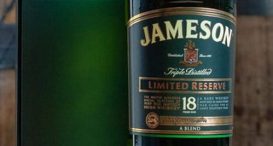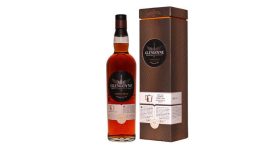Regions of Taste
Whisky is a diverse drink. The wide varieties of tastes, from smoky to floral, all depend on how the spirit is distilled and stored. The vast choice of whisky also comes from the many different regions that it can originate from. Whisky is distilled all over the world, from Ireland to India. By delving into some of the bigger whisky producing regions, we can find out a lot about just how diverse this drink is. Visiting the Islay Festival with our baby
Scotland is perhaps the most well-known and revered whisky producing country and is split into five different regions itself. These five regions consist of Highlands, Lowlands, Speyside, Islay and Campbeltown.
The Lowlands region has well-aged, dry malts that have a certain fruitiness to them. The Highlands are the biggest region with the most distilleries and whiskies that originate here have a slight sweetness to them. Speyside whiskies tend to be sweeter than those found in the Highlands, with more of a floral note to them.
This is opposite of most Islay whiskies, which tend to have a heavier, more peat smoked flavour to them. Campbeltown whiskies tend to be the fullest bodied scotches, with a hint of saltiness in the after taste.
Although theses are general characteristics of the five regions, there is also a lot more information on scotch whiskies, and it is always worth looking into something in more depth to fully glean an understanding of it.
Ireland
Ireland too, is well renowned for its whiskey, and boasts having the oldest licensed distillery in the world at Bushmills in Co. Antrim. Contrary to Scotch, which is distilled twice, Irish whiskey is distilled three times, giving it a smoother finish. Irish distilleries are also unique in their use of pot stills.
In this type of brewing, heat is applied directly to the pots containing the wash (liquid produced by fermentation). Known as pot still whiskey, this type of spirit is a blend of malted and unmalted barley and counts towards 90% of Irish whiskey. Other Irish whiskey is typically made from single malt barley.
India
A country very often overlooked when considering whisky distilleries is India. The most notable feature of Indian whisky is that it tends to be quite a bit younger than whisky from other countries.
Indian whisky is bottled after being aged for four or five years. This is because the hot weather in India matures the spirit faster than in colder climates and also makes the rate of evaporation, known as the angel’s share, higher. It is estimated that around one year of ageing in an Indian distillery is equal to three years in a Scottish distillery.
Japan is another country that people tend to forget about when considering Whisky production, but this country has been distilling whisky since before the 1900s, and is very good at what they do. Similar to some Lowland Scotches, Japanese whisky tends to be light and have a honeyed sweetness.
Like many international distilleries, Japanese distillers aimed towards the Scotch standard and have worked hard to maintain that standard. Since 2003 Japanese distillery Suntory has won gold medals at the International Spirit Awards. From 2010 right up until 2013, they have won distiller of the year, showing the degree of excellence that Japanese whiskies now live up to.

Coming more recently to the whisky game, England has several up and coming distilleries that are bursting onto the market. This country is not without its whisky history however, with the Lea Valley Distillery producing single malt and grain whisky up until 1905.
This hiatus on brewing continued up until Healey Cyder Farm and St Austell Brewery announced they would be releasing a Cornish single malt in 2003. This whisky is somewhat sweet and fruity with hints of caramel and vanilla. This was quickly followed by the opening on St. George’s brewery in 2006, which has so far produced 15 “chapters” of whisky, and each to a very high standard. St. George’s boasts a wide variation of whisky flavours, and promotes its whiskies as either peated or unpeated, with a range of floral and fruity flavours across the board.













